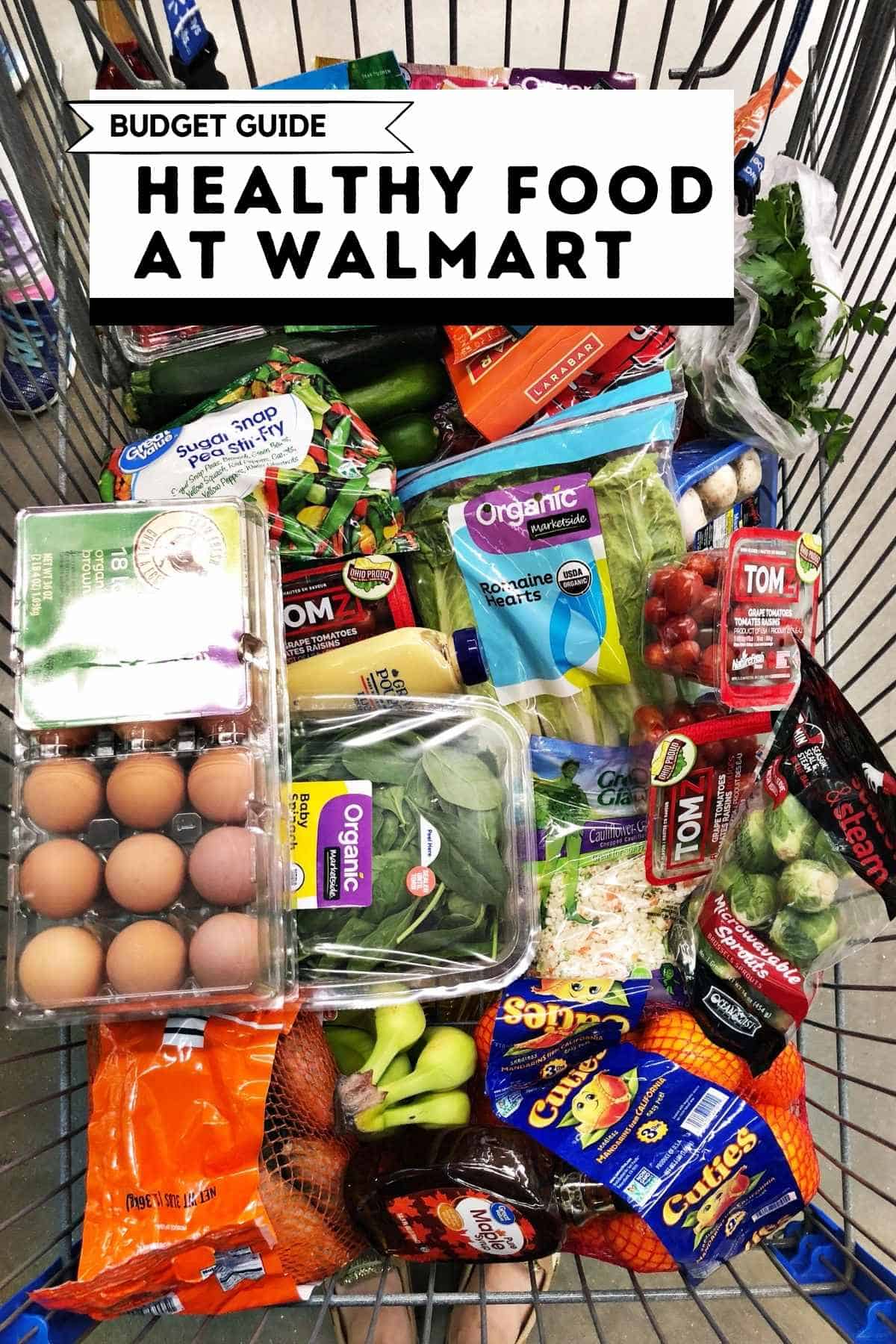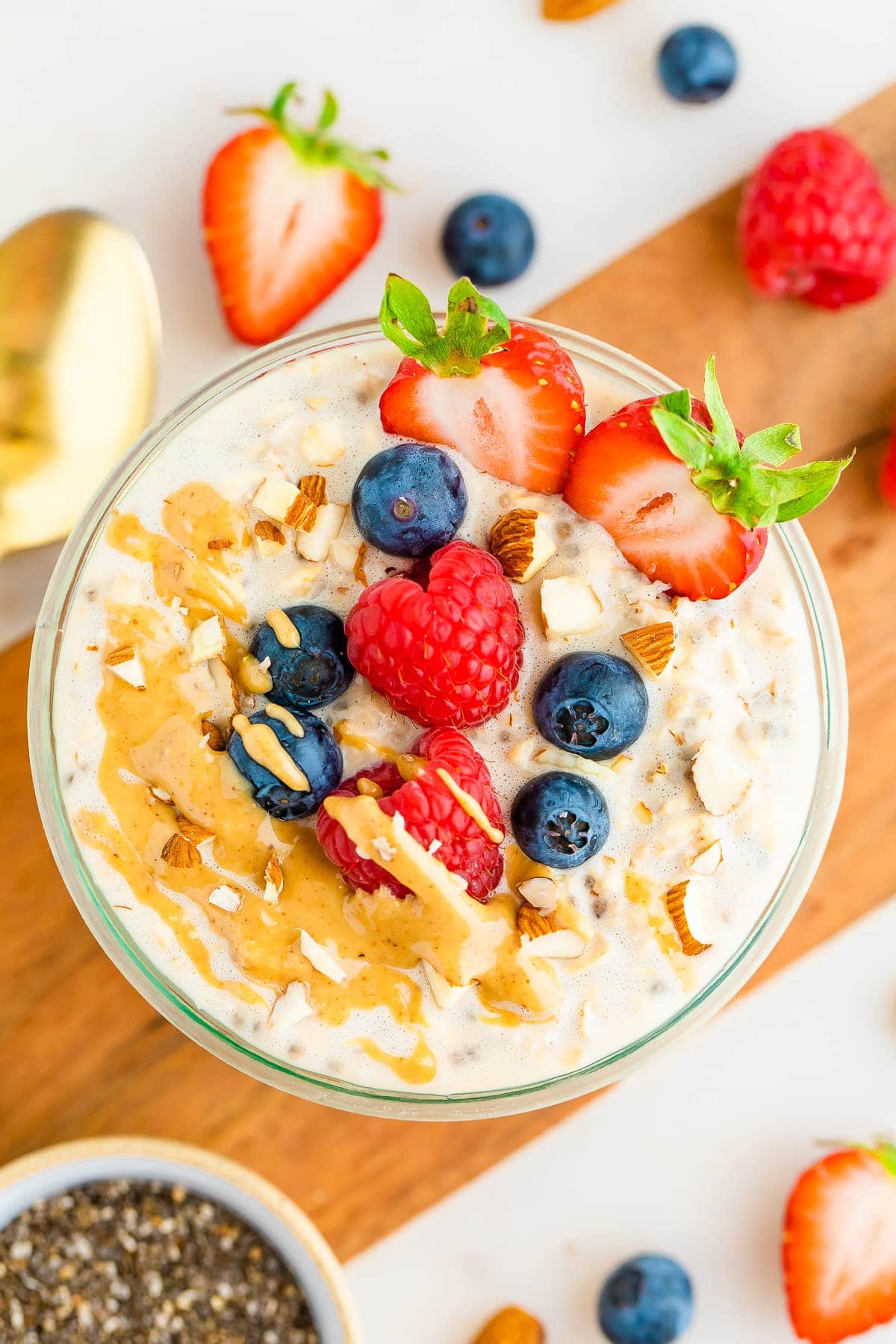Wellness Blog
Tips for Wellness.
The World's Cheapest Fat Loss Meal Plan
by
The World’s Cheapest Fat Loss Meal Plan: Complete $5/Day Guide for Real Results

Table of Contents
- Introduction
- Why Most Budget Meal Plans Fail
- Strategic Grocery Shopping: Maximizing Nutrition at Minimal Cost
- The Complete $5/Day Meal Plan
- Customizing the Plan For Your Body
- Real Results: One Week Transformation
- Common Questions & Troubleshooting
- Next Steps: Beyond the Basic Plan
- Conclusion
Introduction
Fat loss shouldn’t cost a fortune. Despite what supplement companies and meal delivery services want you to believe, achieving significant fat loss results doesn’t require expensive “superfoods” or specialty ingredients. After years of nutrition coaching and experimenting with different approaches, I’ve developed what I believe is the world’s most affordable fat loss meal plan—costing just over $5 per day while delivering approximately 2,000 calories and a whopping 150+ grams of protein.
This isn’t just another theoretical meal plan. I’ve personally tested it with clients and friends who have experienced real, measurable results in as little as seven days. The plan is built on four pillars that make it uniquely effective:
- Budget-friendly without sacrificing nutrition
- Genuinely delicious meals you’ll actually enjoy
- Simple preparation for busy lifestyles
- Strategic macronutrient balance for optimal fat loss
Whether you’re trying to lose your first few pounds or looking to get shredded for a competition, this plan provides a sustainable foundation that works with almost any schedule and budget.
Why Most Budget Meal Plans Fail
Before diving into the plan itself, let’s address why most budget-friendly meal plans fail to deliver results:
-
They sacrifice protein - Many cheap meal plans rely heavily on pasta, rice, and other inexpensive carbs while skimping on protein—the most important macronutrient for preserving muscle during fat loss.
-
They ignore satiety - Feeling constantly hungry leads to cheating and eventual abandonment of any plan. Budget foods that don’t keep you full are ultimately worthless.
-
They’re too repetitive - Eating the exact same meals every day is psychologically unsustainable, regardless of how affordable they are.
-
They’re time-intensive - Complicated meal prep that takes hours each week is unrealistic for most people’s lifestyles.
The meal plan I’m sharing addresses all these issues: it’s high in protein (150g+), focuses on satiating foods, offers variety through simple swaps, and is designed for efficiency, with meal prep taking less than two hours per week.
Strategic Grocery Shopping: Maximizing Nutrition at Minimal Cost

The foundation of any budget meal plan is smart shopping. I conducted a comprehensive price comparison across multiple grocery chains including Whole Foods, Trader Joe’s, Kroger, and Walmart to find the optimal place to purchase ingredients.
The clear winner: Walmart.
While not always the most glamorous shopping experience, Walmart consistently offered the lowest prices on key staples like:
- Protein powder (often 20-30% cheaper than specialty stores)
- Greek yogurt
- Frozen vegetables
- Rice and beans
- Fresh produce staples
Here’s a price breakdown of the core weekly shopping list:
| Item | Amount | Cost |
|---|---|---|
| Vanilla protein powder | 2 lbs | $16.88 |
| Greek yogurt | 32 oz | $3.47 |
| Rolled oats | 42 oz | $2.58 |
| Frozen mixed berries | 12 oz | $2.24 |
| Flour tortillas | 10 pack | $1.98 |
| Eggs | 12 count | $1.98 |
| Chicken breast | 3 lbs | $7.14 |
| Rice | 2 lbs | $1.48 |
| Frozen vegetable mix | 12 oz | $1.00 |
| Beans | 15 oz can | $0.72 |
| Apples | 3 lbs bag | $2.97 |
| Bananas | 3 lbs | $1.44 |
| TOTAL | Weekly | ~$43.88 |
That breaks down to approximately $5.12 per day while providing all the essential nutrients needed for effective fat loss. The key is focusing on nutrient-dense foods that deliver maximum satiety and protein per dollar spent.
Pro Tip: Shop once weekly using the complete list rather than making multiple trips. Not only does this save time, but it also reduces the temptation for impulse purchases that can blow your budget.
The Complete $5/Day Meal Plan
Breakfast: Protein-Packed Overnight Oats

Nutritional Profile (per serving):
- Calories: ~450
- Protein: ~35g
- Carbs: ~45g
- Fat: ~10g
Ingredients (makes 4 servings):
- 2 cups rolled oats
- 2 cups Greek yogurt (0% fat)
- 2 scoops vanilla protein powder
- 1 cup frozen mixed berries
- 4 tbsp honey or maple syrup (optional)
- Dash of cinnamon
- Water to desired consistency
Preparation:
- In a large container, mix the rolled oats, Greek yogurt, and protein powder.
- Add enough water to achieve your preferred consistency (thicker or thinner).
- Stir in the frozen mixed berries and optional sweetener.
- Divide into 4 containers and refrigerate overnight.
- In the morning, give it a quick stir and enjoy a ready-made breakfast.
Why it works: Overnight oats provide complex carbohydrates that release energy slowly throughout the morning. The combination of Greek yogurt and protein powder delivers approximately 35g of protein per serving—significantly more than most breakfast options. The frozen berries add antioxidants, flavor, and natural sweetness without breaking the bank.
Variation ideas:
- Swap berries for diced apples and add cinnamon
- Use chocolate protein powder instead of vanilla
- Add a tablespoon of peanut butter for healthy fats
- Mix in a quarter cup of pumpkin puree and pumpkin spice
Lunch: Freezer-Friendly Meal Prep Burritos

Nutritional Profile (per burrito):
- Calories: ~400
- Protein: ~30g
- Carbs: ~40g
- Fat: ~10g
Ingredients (makes 10 burritos):
- 10 large flour tortillas
- 2 lbs chicken breast, cooked and shredded
- 1 can (15 oz) black beans, drained and rinsed
- 1 cup cooked rice
- 2 bell peppers, diced and sautéed
- 6 eggs, scrambled
- Hot sauce to taste (optional)
- Mexican seasoning blend
Preparation:
- Cook chicken breasts (seasoned with salt, pepper, and Mexican spices) until done, then shred.
- Cook rice according to package instructions.
- Sauté diced bell peppers until softened.
- Scramble eggs in a separate pan.
- Mix chicken, beans, rice, peppers, and eggs in a large bowl.
- Warm tortillas slightly to make them more pliable.
- Add approximately 1/10th of the mixture to each tortilla and roll tightly.
- Wrap each burrito in plastic wrap, then aluminum foil.
- Freeze for up to 3 months.
For serving:
- Remove plastic wrap and foil.
- Wrap burrito in a damp paper towel.
- Microwave for 2-3 minutes, flipping halfway through.
- Allow to stand for 1 minute before eating.
Why it works: These freezer burritos solve one of the biggest challenges in meal planning: having a convenient lunch option that stays fresh and tasty. With 30g of protein per burrito, they keep you satisfied until dinner while being portable and easy to reheat. Making them in bulk saves significant time throughout the week, and they’re substantial enough to prevent afternoon snacking.
Variation ideas:
- Use ground turkey instead of chicken
- Make a breakfast version with more eggs and less meat
- Add salsa or canned diced tomatoes for more flavor
- Use whole wheat tortillas for more fiber
Snack: Strategic Hunger Management
Nutritional Profile:
- Calories: ~100
- Protein: ~0-5g
- Carbs: ~25g
- Fat: ~0g
Recommended options:
- 1 medium apple
- 1 large banana
- 2 mandarins/clementines
- 1 cup berries
Why it works: Rather than expensive protein bars or processed snacks, this plan intentionally uses simple, whole fruits as the primary snack option. Fruits provide natural sugars for quick energy, fiber to help with satiety, and valuable micronutrients—all at a very low cost. The goal isn’t to add significant calories but rather to bridge the gap between meals and prevent extreme hunger that leads to overeating later.
Dinner: Filipino-Chinese Inspired Fried Rice

Nutritional Profile (per serving):
- Calories: ~550
- Protein: ~40g
- Carbs: ~50g
- Fat: ~15g
Ingredients (makes 4 servings):
- 1 lb chicken breast, diced
- 4 cups cooked and cooled rice (preferably day-old)
- 2 cups frozen mixed vegetables
- 4 eggs
- 3 cloves garlic, minced
- 1 onion, diced
- 2 tbsp soy sauce
- 1 tbsp cooking oil
- Salt, pepper, and other seasonings to taste
Preparation:
- Heat oil in a large wok or skillet over medium-high heat.
- Add diced chicken and cook until nearly done.
- Add garlic and onions, sauté until fragrant.
- Push everything to one side and scramble the eggs on the empty side.
- Add frozen vegetables and stir to combine.
- Add cooled rice, breaking up any clumps.
- Pour soy sauce over everything and stir-fry until well combined and heated through.
- Season with salt, pepper, and any additional spices as desired.
Why it works: This dinner option packs a serious protein punch while providing satisfying carbohydrates to fuel recovery and activity. Using day-old rice creates a better texture and helps lower the glycemic impact. The high volume of vegetables adds fiber, micronutrients, and helps fill you up without adding significant calories. As a bonus, this recipe is extremely flexible—you can use whatever protein and vegetables you have available, making it perfect for using up leftovers.
Variation ideas:
- Substitute shrimp or tofu for chicken
- Use brown rice instead of white for more fiber
- Add fresh ginger for an immunity boost
- Include a tablespoon of oyster sauce for authentic Chinese flavor
- Sprinkle with chopped green onions before serving
Dessert: Protein-Rich Smoothie

Nutritional Profile:
- Calories: ~300
- Protein: ~35g
- Carbs: ~25g
- Fat: ~5g
Ingredients (per serving):
- 1 scoop protein powder
- 1 frozen banana
- 1 cup cold water
- 3-4 ice cubes
- Dash of cinnamon
- 1/2 tsp vanilla extract (optional)
Preparation:
- Add all ingredients to a blender.
- Blend until smooth and creamy.
- Adjust consistency with more water or ice as needed.
Why it works: One of the biggest challenges during fat loss is managing nighttime cravings, especially for sweets. This protein smoothie serves as both a satisfying dessert and a final protein boost to end the day. The frozen banana provides natural sweetness and creaminess without added sugars, while the high protein content promotes satiety and overnight muscle recovery.
Variation ideas:
- Use chocolate protein powder for a more dessert-like flavor
- Add a tablespoon of cocoa powder for intense chocolate flavor
- Mix in a tablespoon of peanut butter for creaminess
- Blend in 1/4 cup of cottage cheese for extra protein and thickness
Customizing the Plan For Your Body
The meal plan as presented delivers approximately 2,000 calories and 150+ grams of protein daily, which works well for the average person beginning a fat loss journey. However, individual needs vary based on:
- Current body weight
- Activity level
- Gender
- Metabolic factors
- Weight loss goals
Here’s how to customize the plan for your specific needs:
For Lower Calorie Needs (1,500-1,700 calories):
- Reduce overnight oats portion by 25%
- Use smaller tortillas for burritos
- Reduce rice portion at dinner
- Skip the banana in the smoothie
For Higher Calorie Needs (2,300-2,500 calories):
- Add 1-2 tablespoons of nut butter to overnight oats
- Include avocado in burritos
- Increase protein portion at dinner
- Add an extra snack like a protein shake or Greek yogurt
For Increased Protein Needs:
- Add an extra scoop of protein powder to smoothie
- Increase chicken portion in dinner
- Add protein powder to overnight oats
- Include cottage cheese as a snack
The key principle is maintaining the structure while adjusting portions to match your individual calorie and macronutrient targets. For example, one of my clients, Jeff, who was already fairly lean and active, required an adjustment to prevent excessive weight loss. We increased his calories to 2,400 by adding more chicken to his dinner and incorporating an extra protein shake mid-afternoon.
Note: While calorie needs vary, protein requirements remain high for almost everyone during fat loss. Aim for at least 1g per pound of goal body weight to preserve lean muscle mass.
Real Results: One Week Transformation
The proof of any nutrition plan is in the results. I asked my friend Jeff to follow this exact meal plan for seven days while tracking his body composition using a bioelectrical impedance scale. Here’s what happened:
Starting measurements:
- Weight: 181.4 lbs
- Body fat percentage: 15.2%
- Fat mass: 27.6 lbs
- Muscle mass: 153.8 lbs
After seven days:
- Weight: 179.1 lbs (-2.3 lbs)
- Body fat percentage: 14.3% (-0.9%)
- Fat mass: 25.8 lbs (-1.8 lbs)
- Muscle mass: 153.3 lbs (-0.5 lbs)
In just one week, Jeff lost approximately 1.8 pounds of fat while maintaining almost all of his muscle mass. And this was with him admitting to having a few drinks on the weekend and slightly deviating from the plan for one meal.
Some critics might say this is just water weight, and while some initial water weight loss is expected, the bioelectrical impedance measurements showed genuine fat loss. More importantly, Jeff reported feeling:
- Consistently energetic throughout the day
- Less hungry than on previous diets
- Satisfied after meals
- Strong during workouts
- No cravings that derailed his progress
This real-world example demonstrates what makes this plan effective: it’s sustainable enough that even with minor deviations, significant progress is possible in a short timeframe.
Common Questions & Troubleshooting
Q: Won’t I get bored eating the same meals every day?
A: The meal plan includes multiple variation suggestions for each meal. By using different protein powders, swapping fruits, changing spices, and alternating proteins, you can create dozens of different flavor combinations without changing the fundamental structure or cost of the plan.
Q: How can I make this plan vegetarian/vegan?
A: For a vegetarian version:
- Replace chicken with tofu, tempeh, or additional eggs
- Use plant-based protein powder
- Add additional beans for protein
For a vegan version:
- Replace Greek yogurt with soy yogurt or silken tofu
- Use plant-based protein powder
- Replace eggs with tofu scramble
- Add nutritional yeast for additional protein and B vitamins
Q: What if I don’t have time for meal prep?
A: The beauty of this plan is its flexibility:
- Overnight oats take just 5 minutes to prepare
- Freezer burritos can be made in bulk once every 2-3 weeks
- Fried rice can be simplified by using pre-cooked frozen rice and rotisserie chicken
- Smoothies require just 2 minutes of blending
Even with minimal time, you can prepare a full day’s meals in under 15 minutes.
Q: Will this work if I’m also working out?
A: Absolutely. In fact, this plan was designed with active individuals in mind:
- The high protein content supports muscle recovery
- Carbohydrates are timed around periods of activity
- The plan can be easily scaled up for higher caloric needs
- The balanced macronutrient profile supports performance and recovery
For maximum results, pair this nutrition plan with a structured resistance training program 3-5 times per week.
Q: What supplements should I take with this plan?
A: No supplements are required beyond the protein powder included in the recipes. However, these basics may be beneficial:
- Multivitamin for micronutrient insurance
- Fish oil for essential fatty acids
- Creatine monohydrate for improved training performance
- Vitamin D if you have limited sun exposure
Next Steps: Beyond the Basic Plan
Once you’ve mastered the basic meal plan and seen initial results, consider these advanced strategies:
-
Calorie cycling - Slightly increase calories on training days and decrease on rest days to optimize body composition changes.
-
Carb timing - Concentrate more carbohydrates around workouts when your body can utilize them most effectively.
-
Food quality upgrades - As your budget allows, gradually incorporate more organic produce and higher-quality proteins.
-
Advanced meal prep - Dedicate one day to preparing multiple meal variations for the entire week to increase variety.
-
Targeted supplementation - Add specific supplements based on your individual needs and goals, such as additional fiber or specific micronutrients.
Remember that consistency with the fundamentals will always outperform advanced strategies applied inconsistently. Master the basics first, then gradually incorporate these enhancements.
Conclusion
Fat loss doesn’t require expensive specialty foods, exotic ingredients, or complicated meal plans. This $5-per-day approach proves that with strategic shopping, simple meal preparation, and focus on high-protein, satisfying foods, you can achieve remarkable results without breaking the bank.
The key factors that make this plan uniquely effective are:
- Cost-effectiveness - At just over $5 per day, it’s accessible to virtually anyone
- High protein content - 150+ grams daily supports muscle preservation and satiety
- Practical preparation - Simple recipes and make-ahead options fit busy lifestyles
- Flexible structure - Easily customizable for different caloric needs and preferences
- Real-world results - Proven effectiveness with measurable fat loss in as little as one week
Whether you’re starting your first fat loss journey or looking for a more sustainable approach to nutrition, this plan provides a solid foundation that delivers results without excessive restriction, complicated recipes, or expensive ingredients.
Remember that consistency trumps perfection. Following this plan 80-90% of the time while allowing for occasional flexibility will lead to sustainable, long-term results that more restrictive approaches simply cannot deliver.
🔥 READY TO TRANSFORM YOUR BODY WITH SUSTAINABLE NUTRITION? 🔥
✅ GET THE ULTIMATE 30-DAY HOLISTIC WELLNESS JOURNEY NOW AND ACCELERATE YOUR TRANSFORMATION!
🎯 LIMITED TIME: COMPLETE MEAL PLANS + WORKOUT GUIDES INCLUDED
👇 CLICK HERE TO GET STARTED 👇
🛒 GET THE ULTIMATE 30-DAY HOLISTIC WELLNESS JOURNEY NOW →
Disclaimer: Individual results may vary. This meal plan is designed for general informational purposes only and should not replace professional nutritional advice. Consult with a healthcare provider before making significant changes to your diet, especially if you have any health conditions or concerns.
tags: